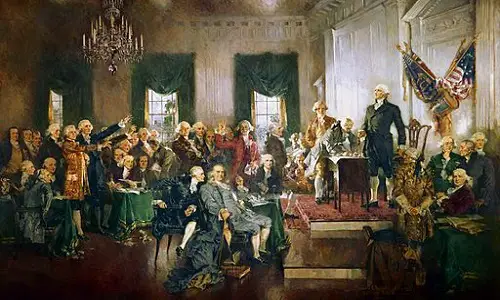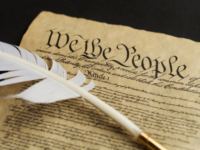Every State, Nation, a corporate body or even an unincorporated association needs a Constitution. How much ever scary and jargonised this term may sound, we can’t run away from it; we live with everyday. Constitution is the set of fundamental rules made to govern the entity they are constituted for. It is the Constitution of the Nation which moulds its dimensions and provides with a framework to carry out its duties. Along with defining the principles the State is based upon, the Constitution lays down definition of laws and delegates the law making and executing duties too.
Constitution of the United States was signed in Philadelphia on 17th of September, 1787 on the similar lines. However the need for the Constitution was realised as the Articles of Confederation, effective since 1781, had failed to provide with a strong government which could deal with the real time challenges faced by United States.
Article of Confederation – August 15, 1777
The major reason behind framing the Constitution was the failure of the Article of Confederation. This Article though adopted on 15th August, 1777 was ratified by all the 13 states only on 1st of March, 1781. As the name suggests, the article was instituted for confederation, i.e. unification of different states with relation to the National or Central Government, namely, the Congress. However the minimum control given to the Central Government made for a weak confederation.
Uncertainty and shaky leadership
Though the Central Government could make crucial decisions regarding war and peace, managing finances of the Nation, handling international affairs, signing treaties, so on and so forth, it failed to exercise its supremacy over many other significant decisions like taxation – which made it difficult for the National Government to raise its own funds, the power to enforce laws and so on. The affairs of the Nation were precarious as the Congress didn’t have a steady leadership and the states didn’t choose to follow the National Government. This comes as no surprise as not all the states were ready to sign the Articles in the first place; like New Jersey, Maryland and Delaware. As Articles required unanimous vote to be constituted, internal and external pressures were put on the states to change their mind; note the French ‘persuasion’ for Maryland to ratify the Articles when Maryland was attacked by the British forces and had asked the French government for military help in 1780.
No sense of unification among the different states within
The Constitution was drafted because the Articles of Confederation did not provide with the supreme authority to the Central Government. Different states’ governments in the United States used their different paper money and also applied tariffs for goods being transported to other states within the Nation as trade; the Central Government couldn’t force the states to obey its rules. Moreover, the country lacked a National army or navy which made it extremely vulnerable. It didn’t even possess a system of National courts which means there was no National unified court for the criminals to be tried. This further intensified the chaos.
Federalism – need of the hour
The unicameral legislature; which is a single house of legislature like the House of Parliament; under the Articles of Confederation was apparently not up to the mark for making laws and further execute them too. Â As the chaos unfolded, there came a need to create a government with enough power to make National decisions with conviction. As the U.S. Constitution was written, three branches of the government namely; Legislative, Judicial and Executive were thus drafted to separate the power of the Central Government and limit it to avoid violations of fundamental rights.













Leave a Reply